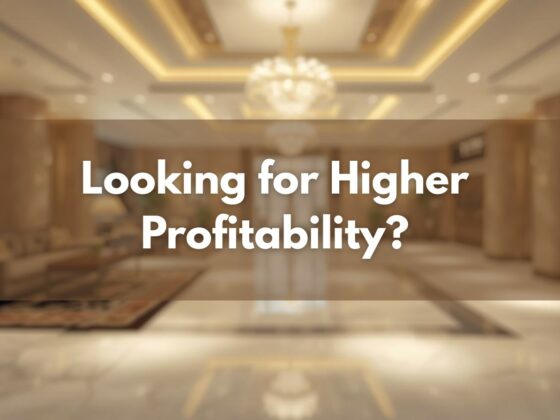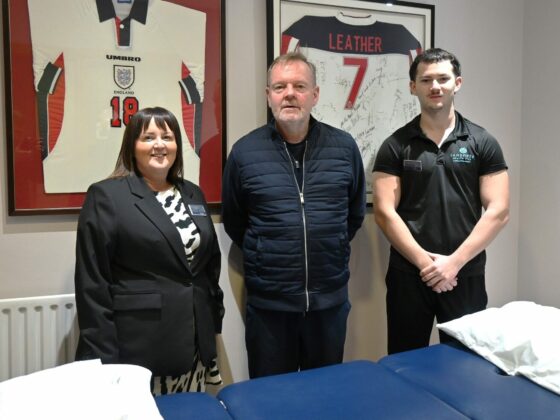
Model 1: The Commercial Director (Unifying the Big Three)
This model is a significant step forward from the siloed structures of the past. Instead of operating independently and often at cross-purposes, Marketing, Sales, and Revenue Management are brought together under a single leader. The integration eliminates the “blame game” between departments and fosters shared ownership over the hotel’s commercial success.
What it looks like: A Chief Commercial Officer or Commercial Director oversees the heads of three distinct departments:
- Head of Sales: Responsible for group bookings, corporate accounts, and B2B relationships.
- Head of Marketing: Responsible for brand awareness, digital presence, content, and attracting potential guests.
- Head of Revenue Management: Responsible for pricing, inventory, forecasting, and distribution strategy.
Pros and Benefits
- Deep Functional Expertise: Each department is led by a specialist with in-depth knowledge and expertise. You have a seasoned sales leader driving group business, a marketing guru building the brand, and a revenue expert optimizing every dollar. Each core commercial discipline achieves a high level of proficiency.
- Clear Accountability & Alignment: With one leader at the helm, the goals of the three departments can be aligned. It’s no longer about who’s doing what wrong, but how they can collectively improve performance towards a common business purpose.
- Breaks Down Critical Silos: This structure is the perfect antidote to the classic conflict where Sales blames Revenue for high rates, and Revenue blames Sales for not closing leads. It fosters collaboration and a unified profit and loss (P&L) responsibility.
Cons and Challenges
- The Risk of New Silos: While the major walls are torn down, the departments can still operate with a function-first mindset. Marketing may focus on website traffic, Sales on lead volume, and Revenue on ADR, without a holistic view of the overall guest experience.
- Potential for Gaps in the Journey: This model is heavily focused on the pre-stay phases. Its primary goal is to get “heads in beds.” But who commercially owns the guests’ on-site experience or the post-stay relationship? Critical stages can fall into an operational gray area, representing missed opportunities.
- Friction at the Handoffs: The journey from a marketing-generated lead to a sales-closed deal and a revenue-optimized booking can still have points of friction. Information can be lost between these functional handoffs.
Financial Impact
- Short-Term: This model often produces quick wins. By aligning pricing, marketing spend, and sales efforts, hotels can achieve an immediate positive impact on key metrics, such as RevPAR (Revenue Per Available Room). It’s a direct and focused way to efficiently boost top-line revenue.
- Long-Term: The financial impact can plateau if the model doesn’t evolve. While excellent at customer acquisition and conversion, it’s less focused on building the deep-seated loyalty that drives higher lifetime value (LTV). The long-term risk is under-investing in the retention side of the equation.
Model 2: The Guest Journey Leader (Orchestrating the Full Experience)
The modern approach organizes the commercial team around the guest’s experience rather than internal functions. A single commercial leader optimizes the entire journey, ensuring a seamless and profitable experience from start to finish. Every touchpoint with a guest becomes a commercial opportunity under this model.
What it looks like: A Commercial Leader oversees a more fluid team, with experts focused on each stage of the journey:
- Attract: Creating awareness and interest through brand storytelling, digital marketing, and public relations.
- Capture: Converting interest into confirmed bookings through a seamless booking process, effective sales tactics, and smart pricing.
- Prepare: Building anticipation and personalizing the upcoming stay through pre-arrival communications, upselling, and cross-selling relevant amenities.
- Deliver: Ensuring the on-site experience meets and exceeds expectations, turning moments of service into opportunities for guest delight and ancillary revenue.
- Review: Gathering feedback from guests and team members, managing online reputation, and nurturing the post-stay relationship to encourage loyalty and repeat business.
Pros and Benefits
- Truly Holistic Guest View: This model forces the organization to think like a guest. Every decision is measured by its impact on the entire journey, not just a single departmental KPI. This creates a seamless and consistent brand experience.
- Drives Loyalty and Lifetime Value: By explicitly focusing on the Deliver and Review stages, this model is built to create brand advocates, not just one-time customers. The commercial team is directly invested in post-stay satisfaction and retention.
- Increased Agility: The leader can flexibly allocate resources to the part of the journey that needs the most attention. If the hotel is struggling with attracting new guests, resources flow there. If conversion is the problem, the focus shifts to the Capture stage.
- Unlocks New Revenue Opportunities: Commercial thinking is applied to the entire stay. The Prepare stage presents a prime opportunity for personalized upselling, and the Deliver stage offers a chance to maximize ancillary revenue.
Cons and Challenges
- Finding the Right Leader: This role requires a “unicorn”—a leader who understands marketing, sales, revenue, operations, and technology. They must be a strategic generalist who can manage a team of diverse specialists.
- Potential for Diluted Expertise: Without dedicated, high-level heads for Sales, Marketing, and Revenue, there’s a risk that deep functional expertise could be weakened. The team may become a “jack of all trades, master of none.”
- Organizational Complexity: This structure blurs the traditional lines between “commercial” and “operations.” It requires exceptional buy-in from the General Manager and other departments and can be challenging to implement in an established organization.
Financial Impact
- Short-Term: The financial impact might be slower to materialize. There’s an initial investment in reorganizing teams and focusing on stages like “Deliver” and “Review” that don’t always produce an immediate spike in RevPAR.
- Long-Term: This is where the model excels. By creating exceptional experiences and fostering deep loyalty, it aims to significantly increase Guest Lifetime Value (LTV). This leads to more repeat, direct bookings (which lowers customer acquisition costs) and generates powerful, free word-of-mouth marketing, creating more sustainable profitability.
The Unifying Factor: Hotel Business Intelligence
Regardless of which organizational model you choose, one element is non-negotiable for success: a robust Hotel Business Intelligence (BI) system. 📊
A BI platform acts as the “single source of truth” for the entire organization. It breaks down the data silos that can persist even in a unified team structure.
When everyone from the sales manager and marketing coordinator to the revenue analyst and general manager is looking at the same real-time data, decision-making becomes faster, smarter, and more aligned.
- In Model 1, a BI system helps the functional experts see beyond their departmental KPIs and understand their impact on the overall business.
- Model 2 provides the journey leader with the 360-degree view of data needed to effectively orchestrate all five stages of the guest experience.
Without a centralized BI system, both models are flying blind. With it, they are empowered to make data-driven decisions that drive real results.
Which Model Is Right for You?
There is no one-size-fits-all answer. The best choice depends on your hotel’s size, brand positioning, and organizational maturity.
The Commercial Director model is an excellent fit for:
- Larger hotels or hotel groups where deep functional expertise is critical.
- Organizations that are just beginning their journey to break down long-standing internal silos.
- Properties that need to bring immediate, disciplined alignment to their core revenue-generating functions.
The Guest Journey Leader model is ideal for:
- Boutique or lifestyle hotels where the guest experience is the core differentiator.
- New properties that build their commercial team from the ground up, free from legacy structures.
- Forward-thinking organizations that are ready for the next evolution toward total guest-centricity.
Ultimately, the goal is the same: to create a seamless, profitable, and memorable experience for every guest. The path you choose to get there—whether by uniting your functional experts or by mastering the guest journey—will define your commercial success for years to come.



